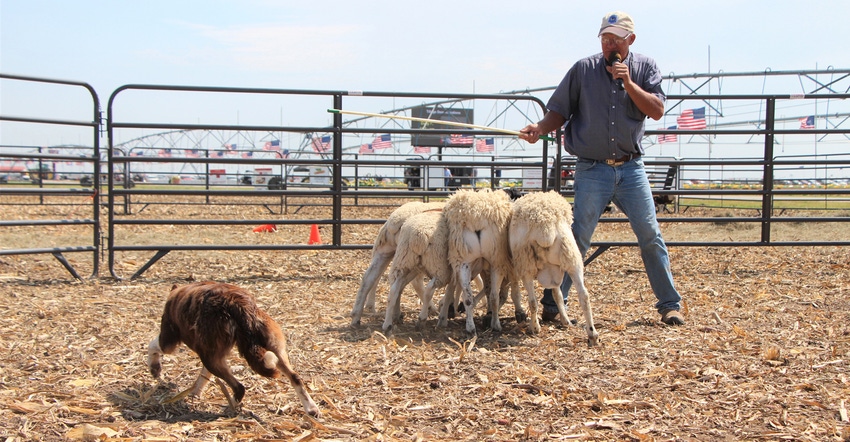
“Lie down. Hey, lie down,” Tim Gifford snapped at his border collie Kat. “That’ll do. That’ll do.”
Gifford, a Nebraska cattleman, trains herding dogs to work stock. He is a member of the National Cattledog Association and U.S. Border Collie Handler Association. He uses his dogs on his cow-calf operation to gather cows, move them from pasture to pasture and sort them in an alleyway.
Gifford will share his expertise multiple times a day during Husker Harvest Days, Sept. 14-16 in Grand Island, Neb. Now in their 10th year at the show, he and his dogs will be demonstrating his techniques at 9 a.m., 11 a.m., 1 p.m. and 3 p.m., along the north side of Flag Road, just outside the exhibit field. If you are planning to attend, here are a few takeaways to expect from his presentation:
Start them young. If you’re buying a puppy and you know they are going to work livestock, train them. Teach them basic commands. More importantly, bring young dogs around the stock, Gifford says. It increases awareness and comfort levels with animals.
Herd small stock. No matter the size of the dog, if it is possible, begin training with small livestock like sheep or young calves. This provides safety for the dog, while also adding to its confidence. Plus, as a handler, Gifford says it is easier to maneuver the stock and the dog with smaller animals.
Get a stick. Handlers need a sorting stick to train. Sorting sticks are tall and bendable. They provide extra reach for the handler. It can be used to move the animals, but more importantly direct the dog.
Know the commands. There are five words every dog handler knows:
“Come by” tells the dog to move clockwise.
”Away to me” means move counterclockwise around the stock.
“Walk up” means to walk toward the livestock, whether sheep or cattle.
“Lie down” typically means stop and lie down.
”That’ll do” tells the dog work has finished and it must come back to you.
Move your body. Combining words with body movement during early training will help the dog understand which way to move. When you say “come by” and make a move to the right, the dog sees and senses the direction.
Reward often. Gifford says it is important to reward the dog for the work. In the corral or pasture, it can be just a spoken word or a gentle pat on the head. “It lets the dog know they are doing good work,” he adds. And it builds a strong bond between handler and dog.
Gifford has a gauge to know when a herding dog is fully trained. “Ultimately, I want to get to where I don’t have to be in pen to tell her where to go,” he explains. “I don’t have to sit in corral pens or on the gates. I want her to listen to me and know which way to go.”
Bring your dog for training
HHD offers a unique opportunity for you to bring your dog for Gifford and his handlers to work. There will be a fee to work your dog and you must sign a waiver.
If you bring your dog, remember that it must stay on a leash and in the demonstration area. No dogs are allowed on the Husker Harvest Days site.
If you are interested in allowing Gifford to do a little training with your dog or want more information on the demonstrations, contact him at [email protected] or call 308-631-0387.
About the Author(s)
You May Also Like






